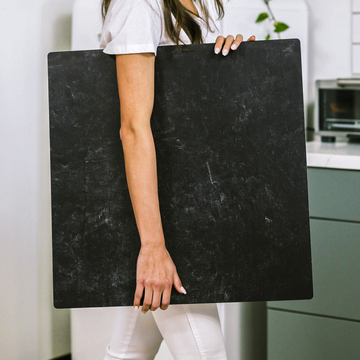There's something undeniably captivating about food photography with black backgrounds. That perfect slice of cheesecake gleaming against the void, steam curling off a freshly brewed espresso in the darkness - these images don't just show food, they tell a story. While most food photographers stick to bright, airy setups, those who master black backgrounds unlock a whole new world of creative possibilities.
Why Black Backgrounds Create Magic
Black isn't just an absence of color - it's a powerful compositional tool. Here's what it communicates:
- Luxury: Think high-end restaurant menus and premium packaging
- Drama: Deep shadows add mystery and intensity
- Focus: Eliminates distractions to make your subject shine
When to Go Dark
Black backgrounds work exceptionally well for:
- Decadent desserts (chocolate, caramel, dark sauces)
- Moody, atmospheric shots (steaming drinks, smoke effects)
- Premium product photography (wine, coffee, artisanal goods)
Solving the Technical Challenges
The biggest mistake beginners make? Assuming you can just turn down the lights. Professional black background shots require careful control.
Lighting Like a Pro
Here's my go-to setup for consistent results:
- Start with a true black surface (matte paper or foam board works best)
- Position a single softbox at 45° to your subject
- Use a grid or barn doors to prevent light spill
- Add negative fill with black cards opposite your light
Remember: The key isn't less light - it's controlled light. You want enough illumination on your subject while keeping that background deep and rich.
Styling Secrets for Maximum Impact
Once you've nailed the lighting, these styling tricks will take your shots to the next level:
- Play with contrast: Bright red berries or golden crusts pop against black
- Embrace negative space: Let your subject breathe for that editorial look
- Add metallic accents: Gold cutlery or copper pans scream luxury
Pro tip: Keep a small spray bottle handy. A light mist on fresh herbs or berries creates beautiful water droplets that catch the light.
Post-Processing for Perfection
Even the best shots need some polish. In editing:
- Slightly deepen blacks (but retain shadow detail)
- Use selective brightening to make your subject pop
- Try cool shadows with warm food tones for striking contrast
The goal? An image where the food looks so vivid and textured, you can almost taste it through the screen.
Ready to Try It Yourself?
Black background photography might seem intimidating at first, but once you understand the principles, you'll be creating stunning, professional-looking food shots in no time. The secret lies in controlling your light, styling with intention, and not being afraid of the dark.
What's your biggest challenge with black background photography? I'd love to hear about your experiences and help troubleshoot any issues you've encountered.



